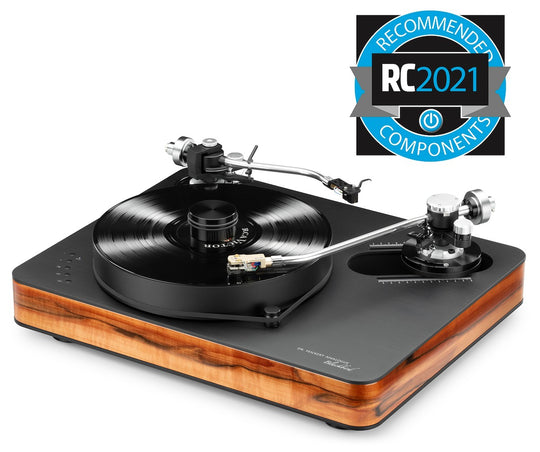
"@elliottbnewcombjr I hate to pop your bubble,
You are not popping my or anyone’s bubble, just exposing your different beliefs/preferences.
My preferences:
"but one great tonearm is way better than two cheap ones"."
NO one said CHEAP Tonearms. However, the arm with REMOVABLE Headshell is the one for MONO Cartridge AND Alternates. The main arm, preferably long, can be fixed or removable.
3 Tonearms, one dedicated to MONO, that arm does not need to be ’superior’ relative to the others, just a respected arm to have a MONO cartridge ready to play mono lp’s in seconds. FAR better than a single arm, playing Mono LP’s with a Fixed Stereo Cartridge, even if your Preamp has Mono Mode. Easily heard by anyone.
"Dust covers should be isolated and hinged so they can be used during play. A good thick acrylic dust cover can attenuate sound up to 10 dB at some frequencies further isolating the cartridge from sound."
Who in their right mind would want to 'attenuate' SOME frequencies by 10db? Attenuate various frequencies to various extent????
Right? Wrong? MANY people say ’dust cover off’, to avoid reflected microphonics. No way do I believe a dustcover down is either proper or better. How many of these crazy looking expensive turntables of great renown even have dust covers? And if the do, they are custom monster ’surrounds’, certainly not hinged. Not played when on, actually impossible to start an LP and put those monster ’surrounds’ in place.
"Removable head shells are a terrible thing to do to a cartridge and it’s meager signal. Every contact degrades the signal just a little."
Soooooo many great highly respected tonearms have removable headshells, this argument is theoretical, ’purist’ in nature, not evidenced by those many hi-end makers. In another thread, a quick look at hifishark tonearms for sale: I listed a long list of ’famous’ tonearm makers with removable headshells. The current batch of mid-priced TTs with arms with fixed cartridges do a dis-service to their owners IMO.
"The right way to wire a tonearm is a single cable cartridge clips to RCAs or XLRs at the phono stage end. The Schroder CB is an example of such an arm."
Yes perhaps, at least ’purist’ thinking: but no way are the MAJORITY going to purchase the limitations that involves. I had wires soldered to phono cable, a total pain, and when re-wired to VPI mini-din junction box, I heard no degradation.
I seriously doubt two absolutely identical setups, totally revealing: the only difference not having a joint in-line that a difference could be heard. Even by a bat.
"The Thorens TD 1600 is a turntable with an isolated dust cover done the right way. The dust cover is mounted to the plinth not the chassis carrying the tonearm and platter."
I would lift it off for play, hope the hinges are the drop in type.




